27th November CARTAGENA
We are in beautiful Colombia, our 6th continent, country number 46 and the start of our South American adventure!!
The ferry conveniently drops us off in the picture perfect Caribbean city of Cartagena and we leave the sea port for our hotel in traffic mayhem. We are glad we had one booked in advance as searching for one in the city now would not be fun!
Despite the exhaustion of travelling for the whole day, we head out into the centre; the busy roads are filled with yellow taxis but they either have someone in them or just carry on past us; we enlist the help of the friendly transit police but even they have no luck, explaining it is ‘muy difficile‘ to get a taxi around here!
The evening walk turns out to actually be a nice one, past the lapping waves of the ocean and a sea breeze which keeps us cool, reaching the huge open-aired Café del Mar. After a brief stop, we carry on to the Old Town or Walled City (Las Murallas) and our first sight of the romantic fortified city walls built in the 17th century.
Cartagena de Indias as it is formally known, widely regarded as Colombia’s most beautiful city, is situated on the northern coast of Colombia on a sheltered bay and has the most extensive and complete military fortifications in South America. The 13km golden colonial stone walls is an amazing sight with grand church spires within it visible from outside the walls. The most popular place in the country for both domestic and international tourists, it is also one of the safest cities in Colombia due to the high police presence; they are virtually on every street.
Founded in 1533, it was the first Spanish colony on the continent, with many of the colonial buildings still dating back to that time. The fort was built to protect against pirate attacks and then construction of the walled city began, near to the fort. It became the main Spanish port on the Caribbean coast and used to store treasures including gold, emeralds and pearls taken from the indigenous people before shipping it all to Spain.
It was also one of the first towns to claim independence from Spain in early 1810.
As recently as 10 years ago, Colombia was off most tourist’s radars due to high crime associated with cocaine production, drug trafficking and cartels. Despite exhaustive efforts by government and the military, Colombia remains the world’s biggest supplier of cocaine, an estimate of 410 tonnes annually. Tourism has increased significantly in recent years, a result of nationwide efforts to improve security.
The cobbled stone streets are picturesque, old balconies which look like they have come straight from the set of a musical stage overlook a mix of upmarket stores, luxury hotels, small boutiques and restaurants with pretty Christmas lights adding to the ambience. Horse-drawn carriages gallop down the streets, taking people on tours of the city and the pretty open plazas are filled with people eating and drinking and enjoying the atmosphere.
The women are dressed up in cocktail dresses and high heels and the men in shirts and trousers, we begin to feel a little underdressed!
We decide to also stop for a cocktail and a cold Club Colombia beer in the Santo Domingo plaza and watch a traditional dance where the brightly dressed Caribbean group dance to a salsa beat. Vendors trying to sell their wares come to our table every few minutes, offering everything from roses to Cuban cigars! There‘s even a late night wedding taking place in the church! Later, we get some dinner at a local pizzeria and then make the easy walk back home.
28th November
The walk into the centre seemed much easier last night with no hot sun blazing down on us! Outside the walled city, we are in the working area of Getsemani where we spend a while sorting out a new sim card for the phone, going from one store to another in 30 degree heat, we can’t resist the pull of happy hour cocktails and beer at the Hard Rock Café Cartagena!
We walk around the old town past street vendors selling arepas and cheese filled yucca balls just metres away from top-end designer stores and look around some of the more interesting stores including one where we watch hand crafted sweets being made, where sugar syrup is swirled expertly into candy fruit slices. Then it is time to watch more dance performances in the central square of the leafy Plaza de Bolivar, named after the revolutionary who led Colombia to independence. Open-aired party buses with ear bursting speakers zoom down the road with the people inside dancing along, the Colombians sure like to party!
29th November
We take the car into Toyota early in the morning to have the steering rack replaced and were then hoping to make the drive to Santa Marta as we had been told it would be a 4 hour job. However 7 hours later, at 3pm we are still waiting so we spend the night just outside of the city.
We walk along the wide beach which is filled with kite surfers looking for somewhere to eat and end up on some iffy back roads which don’t feel too safe so we decide to walk back and drive out down the road.
Finding a nice little beachside restaurant, we order some delicious arroz de camarones (shrimp rice) and a pollo milanesa (chicken Milanese) and are surprised to be given huge portions each; we had been used to getting tiny portions in Central America and still being hungry! One dish could have been easily shared between the both of us and we hope this is a good sign of things to come!
30th November
As we had not seen Cartagena in daylight hours yet, we set off for the walled city and a peaceful if not slightly hot and humid stroll around the streets. The city has an average temperature of around 28 degrees year round. The old town was made a UNESCO world heritage site in 1984.
The streets are a lot quieter than at night and it seems as though we have the whole city virtually to ourselves on occasion. Everyone seems to be avoiding the heat of the day and it’s not difficult to see why. Entering the old city via the clock tower, the colours are vibrant, a mix of pastels, whites, oranges and golden brown painted buildings with balconies overflowing with bougainvillea and large brass Scrooge inspired doorknockers! It‘s like walking on to the set of an olden day movie!
In the Plaza de las Coches (Carriages Plaza) we walk through the colonial arched walkway where brightly dressed Caribbean women sell a variety of freshly cut fruit and local sweet stalls line the sides.
The huge Monumento a la India Catalina depicts a Carib woman who acted as interpreter on arrival of the Spaniards.
We wander around the city for a while, admiring the colourful colonial streets.
In the Plaza de San Pedro Claver, children play among the pigeons as we look at the unusual metal sculptures depicting everyday life.
There are also plenty of museums and churches which we could have explored if we had more time.
The largest and oldest plaza in the city is the Plaza de la Aduana which once served as the centre of commerce in colonial Catagena and is used these days as a parade ground on festival days.
We pass the plaza Santo Domingo where we had stopped a couple of nights ago, once a slave trading site, and stop at an unusual large bronze statue known as ‘La Gordita’ (fat lady) by Botero.
The pavements are lined with handicrafts from brightly coloured bags to stacks of Panama hats in front of designer boutiques selling solely white attire, the official dress colour code of the city!
We head back to the Hard Rock Café for a respite from the heat and also their happy hour but they have run out of beer! Not very rock and roll! So we head to the restaurant we which had looked good earlier and serving up traditional Colombian fare but they are now closed.
Luck does not seem to be on our side right now… An ice-cream from a gelateria fills the gap before heading to breezy Café del Mar located atop the historic city walls and lined with cannons pointing out to sea between lookout towers, for a beautiful red sunset!


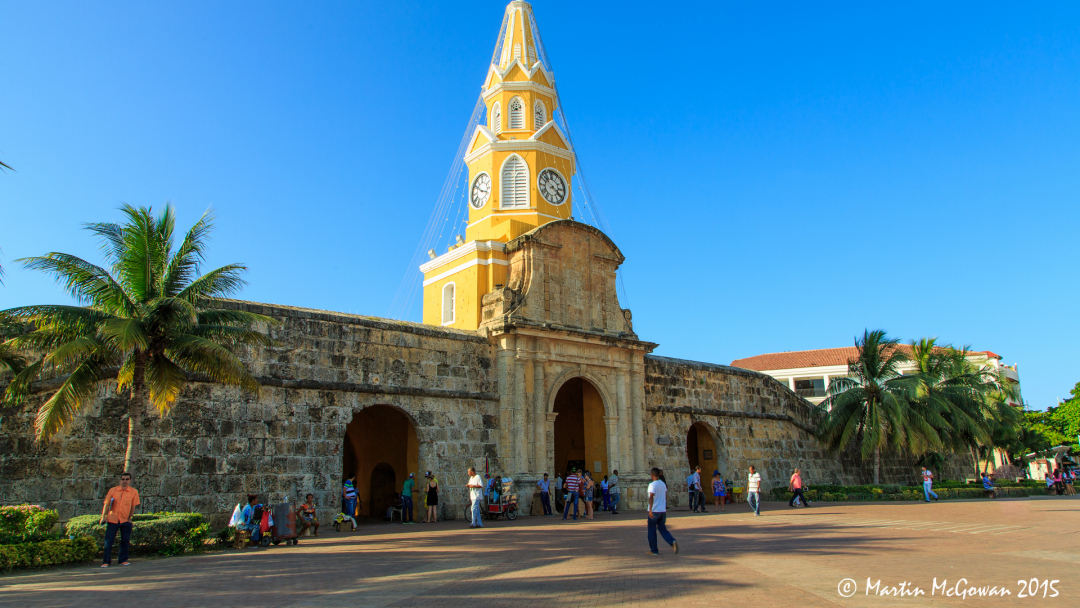
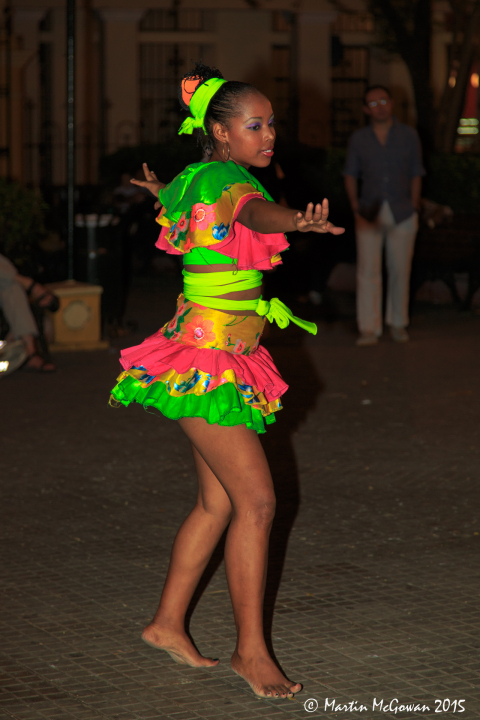
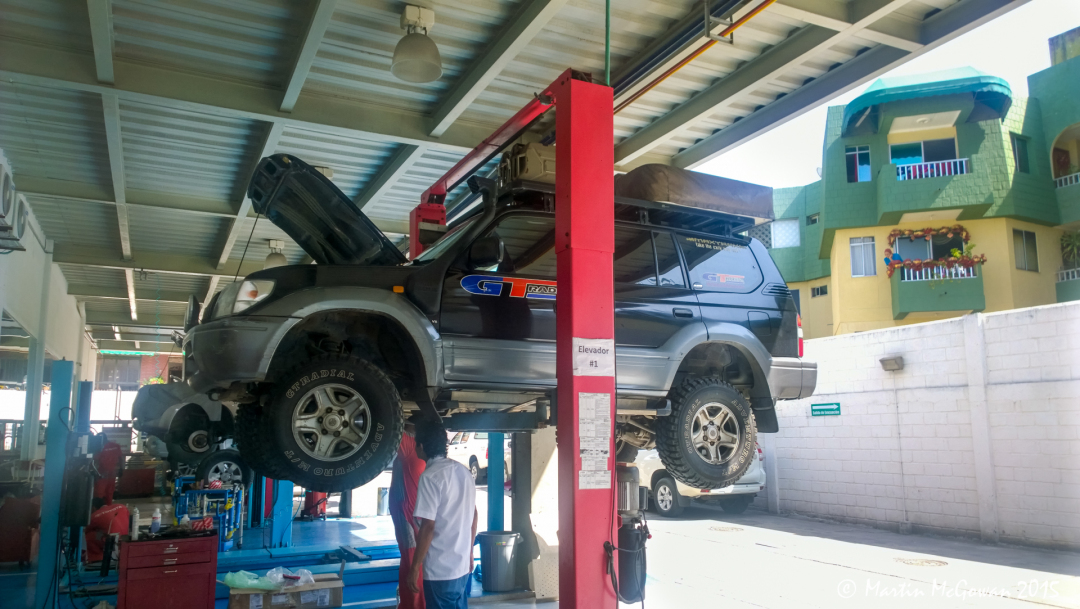
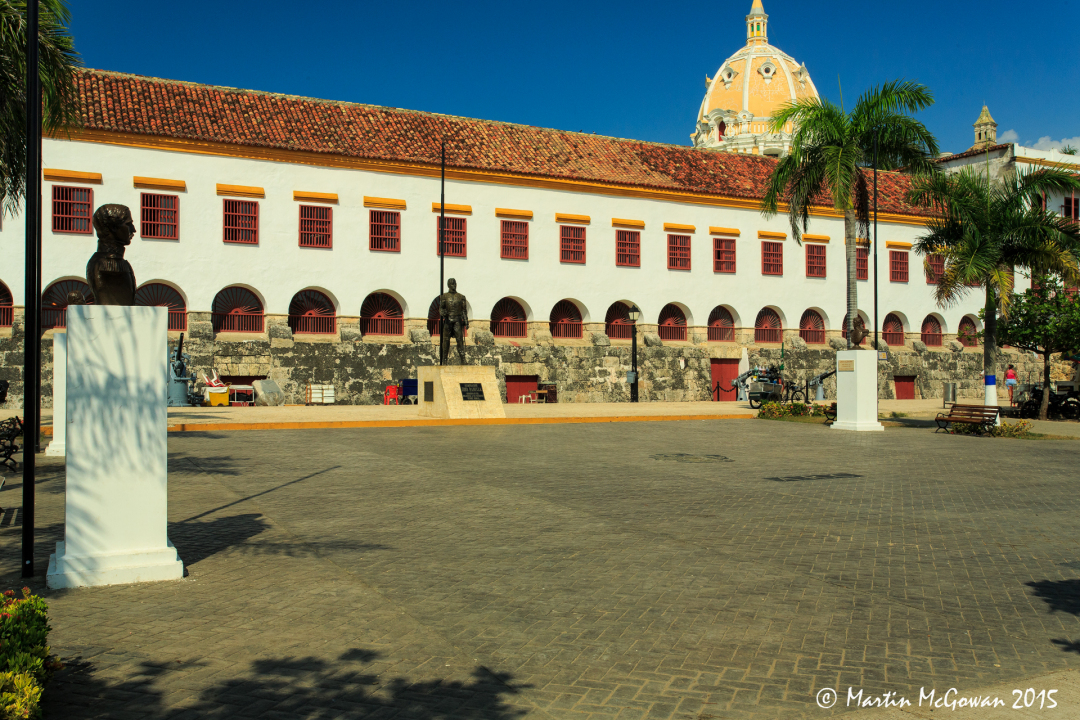
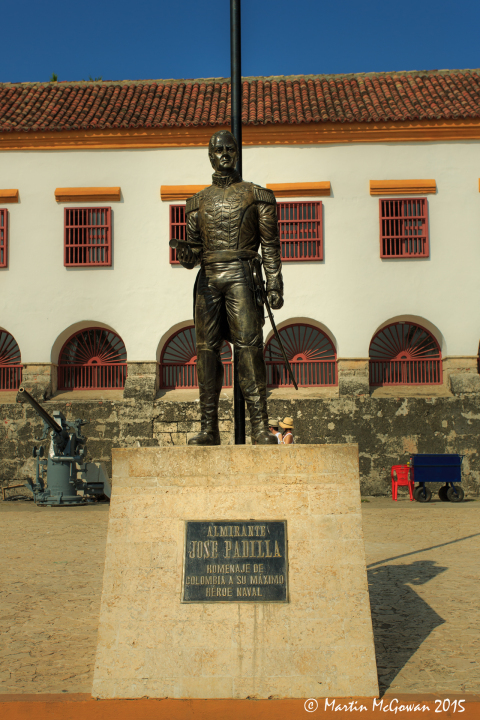
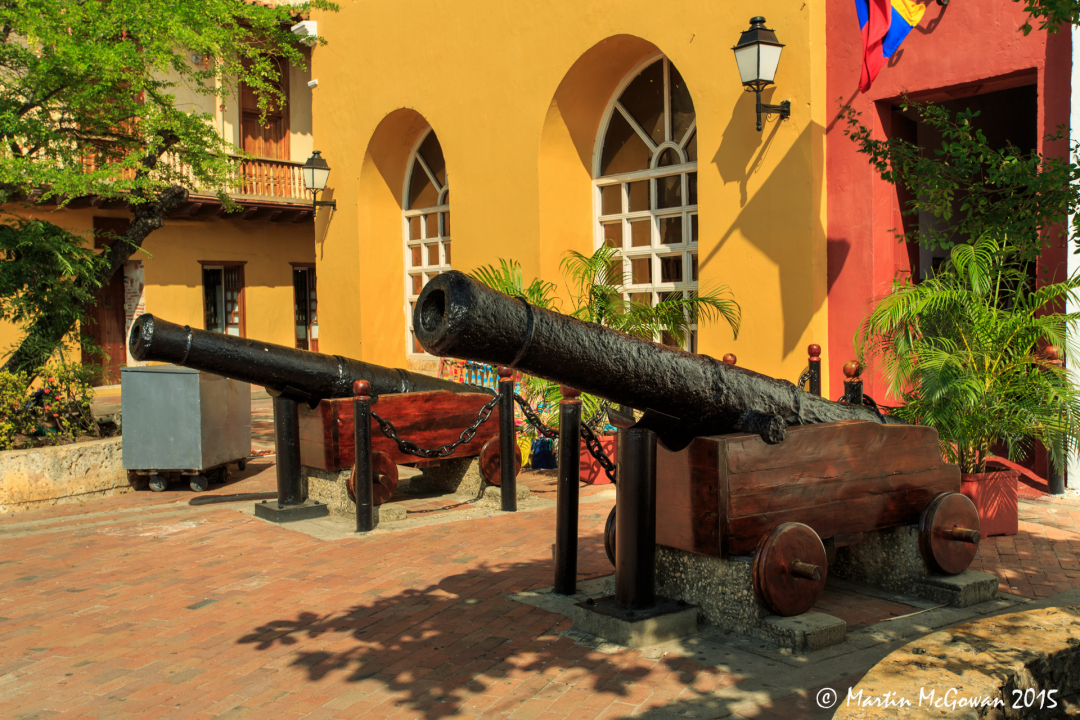
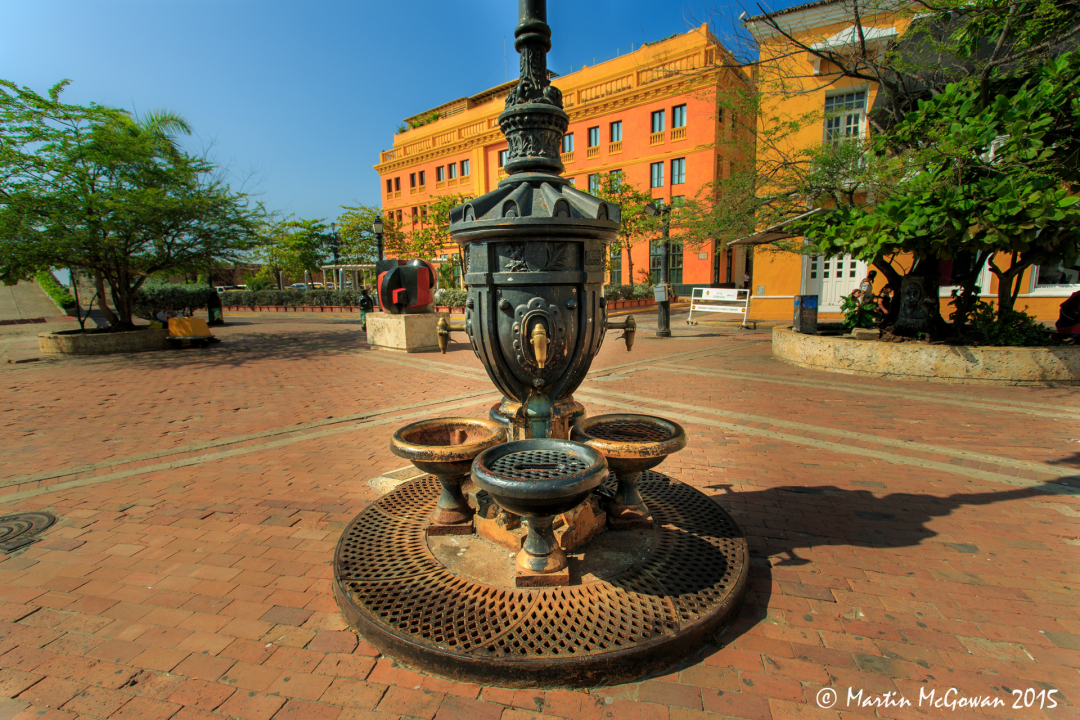
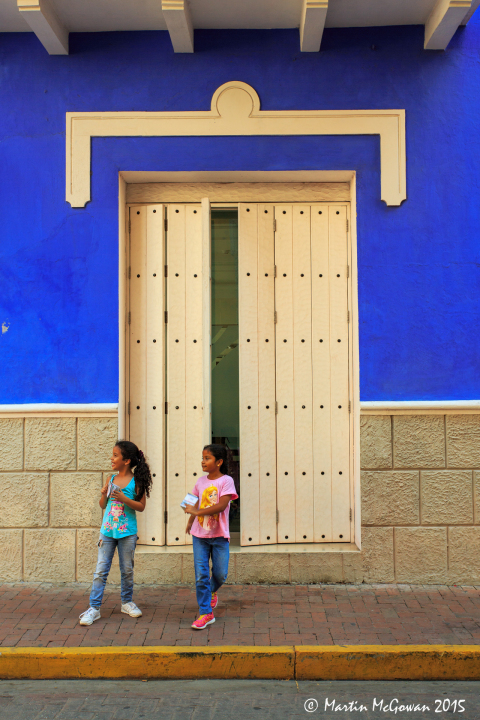
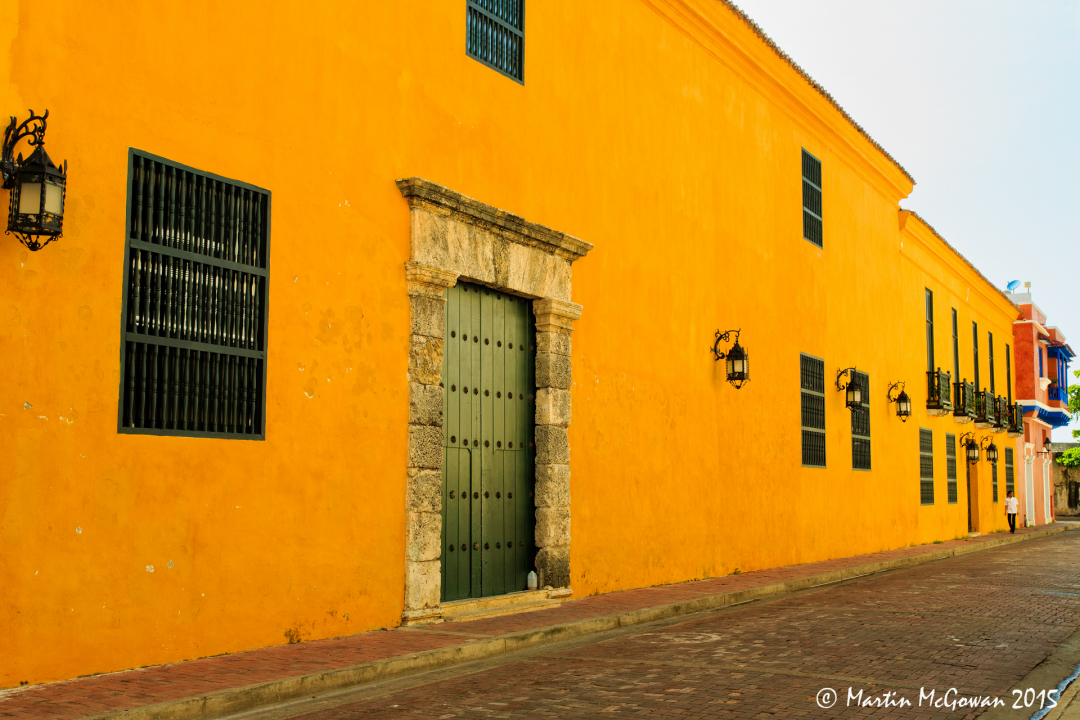
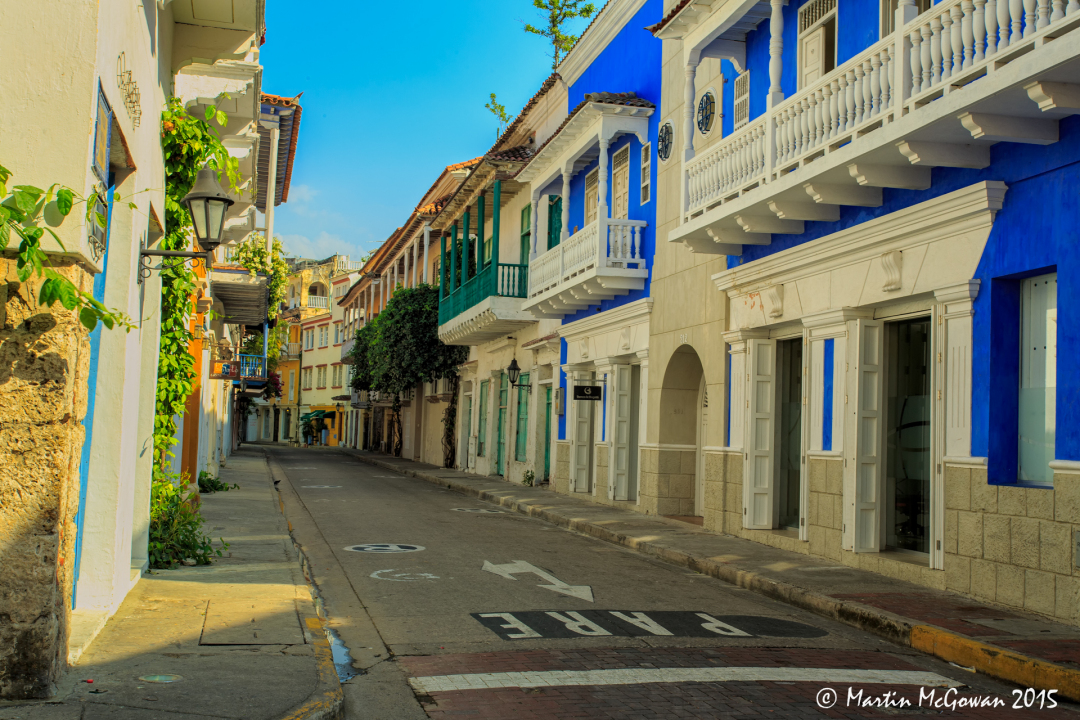
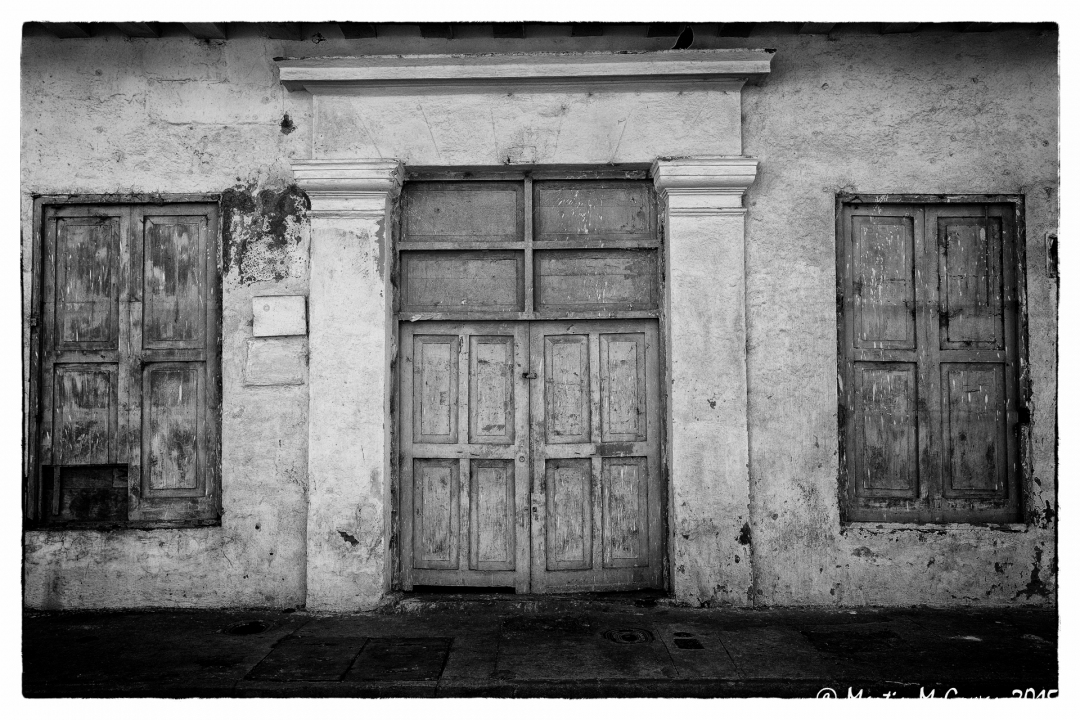
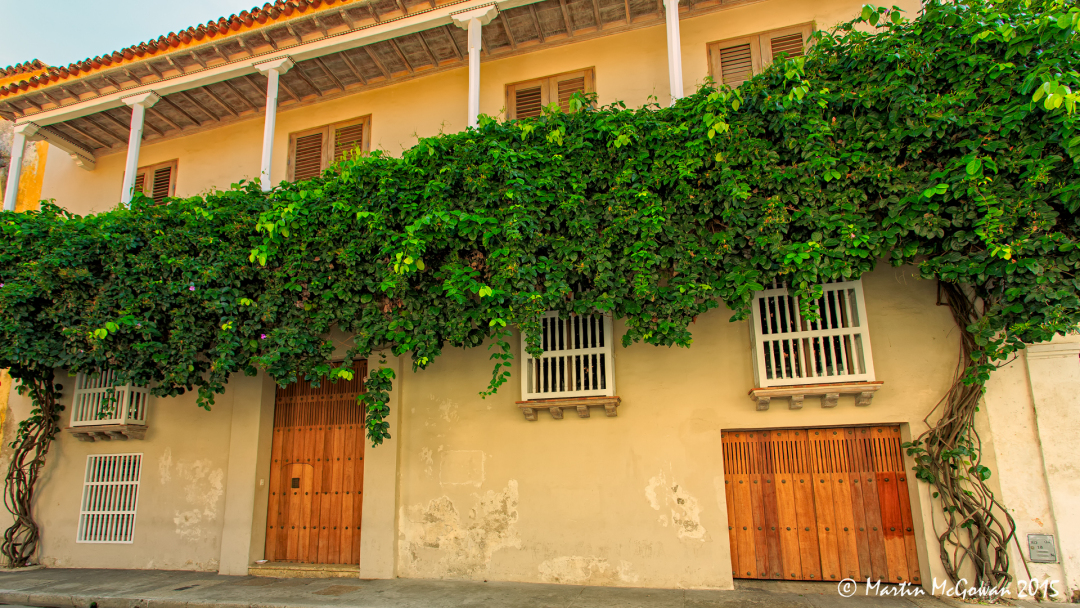
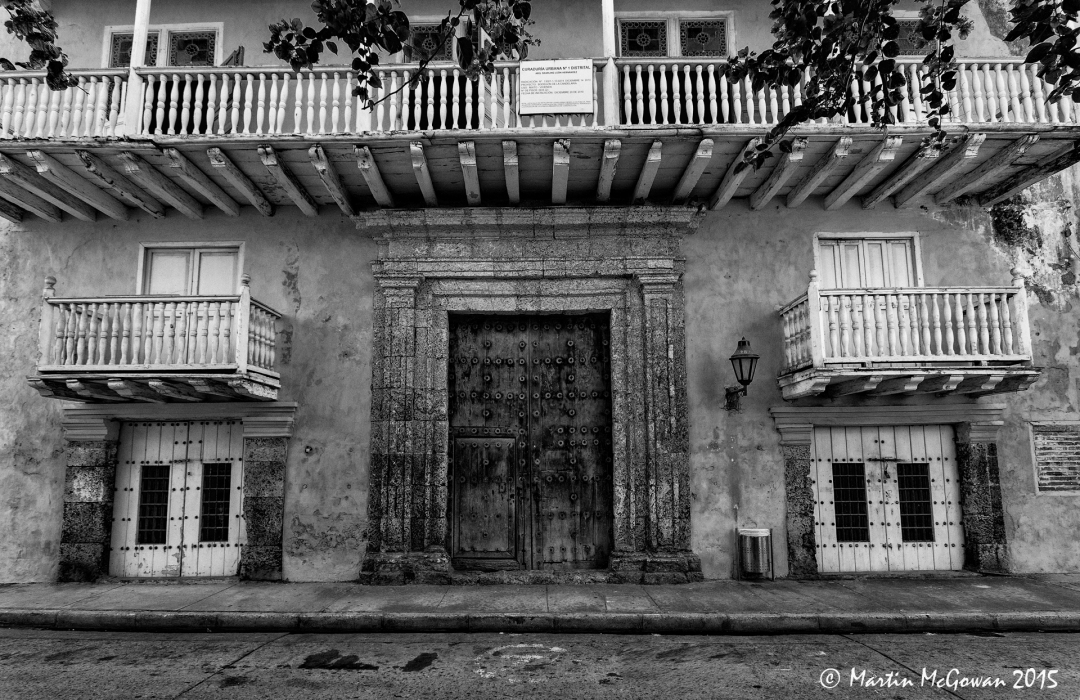
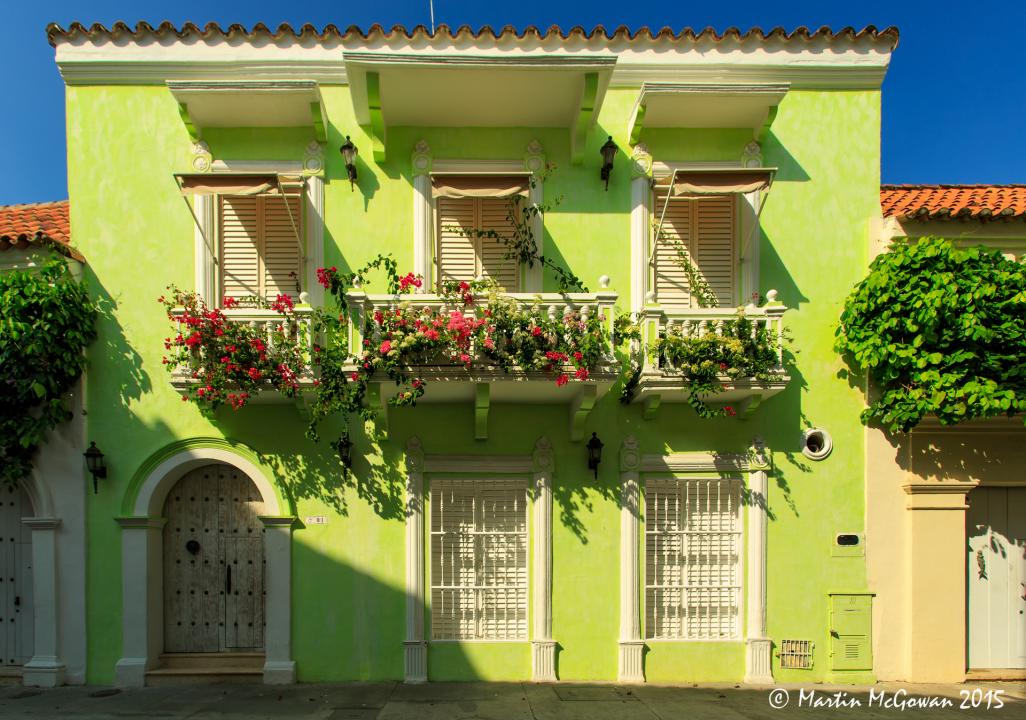
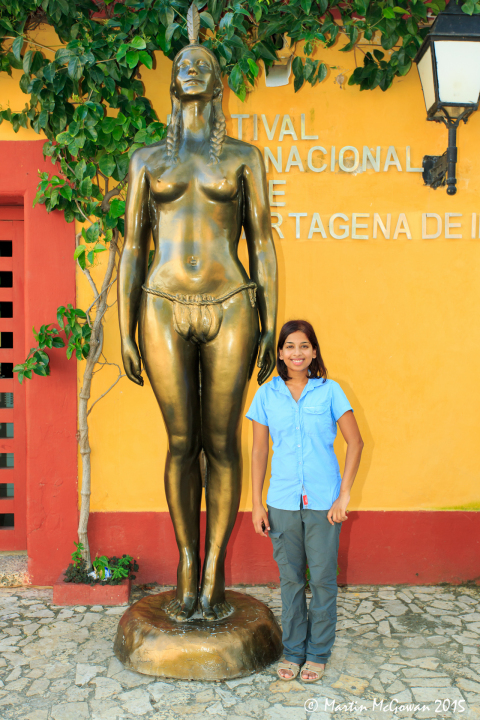

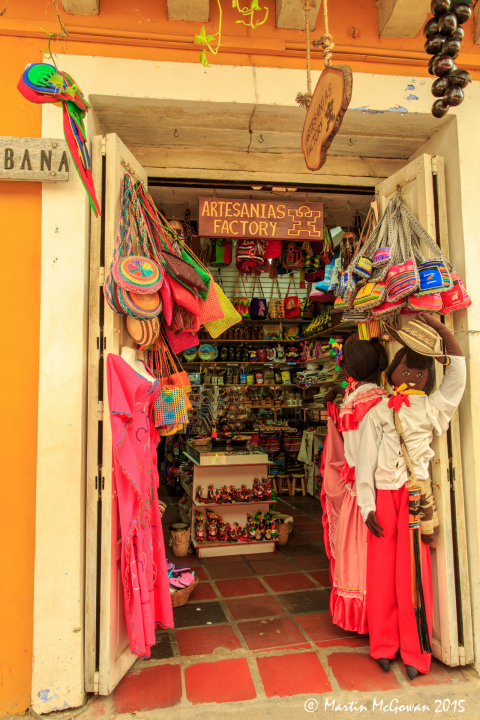
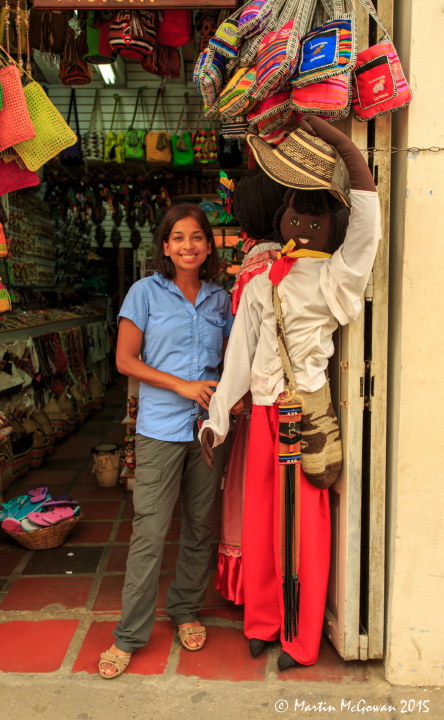
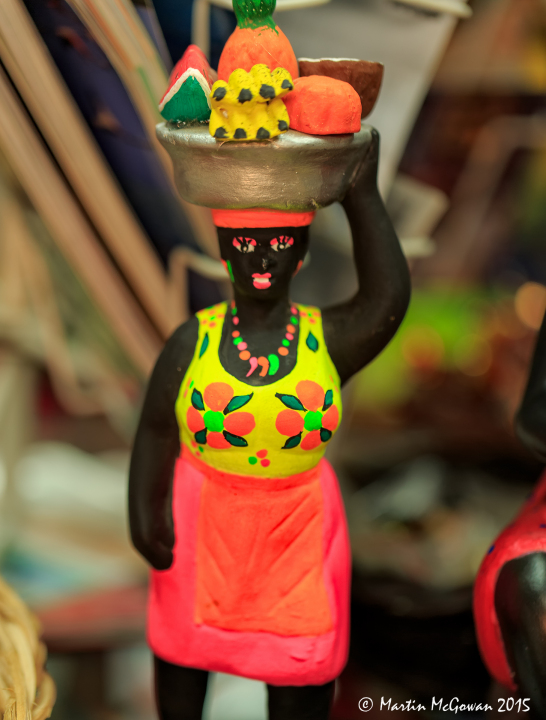
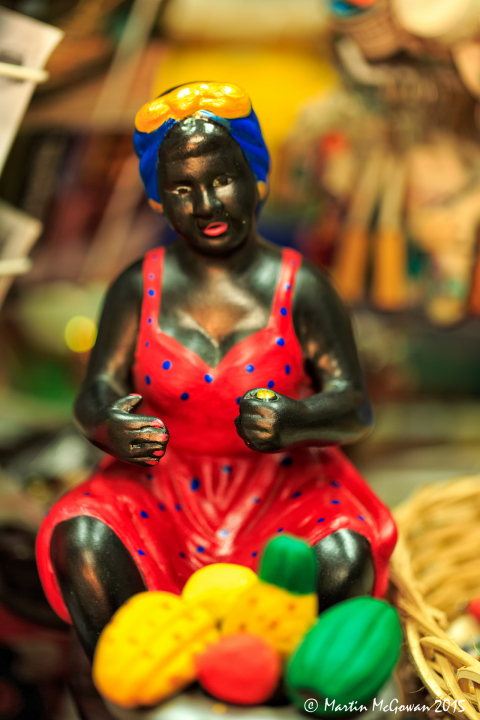
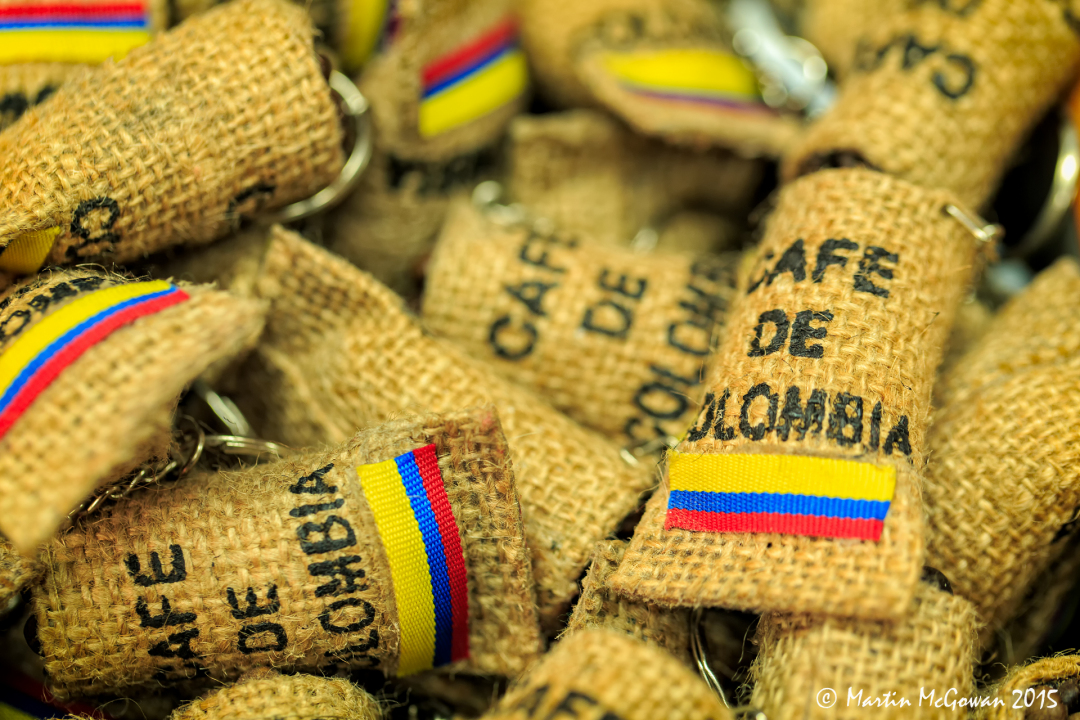
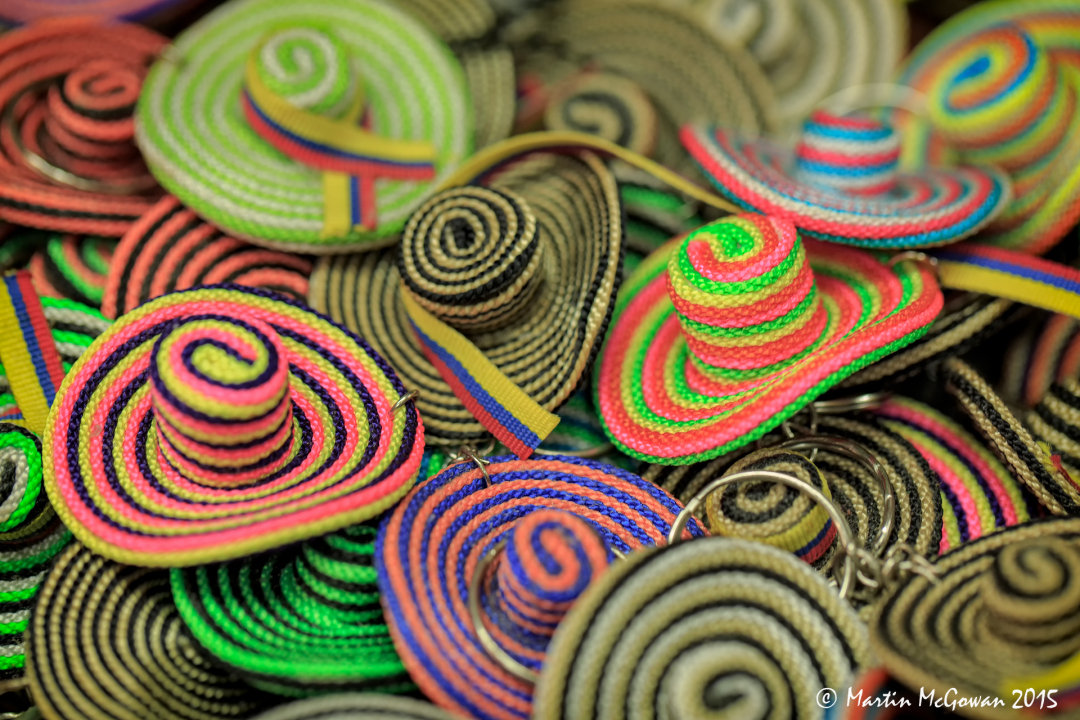
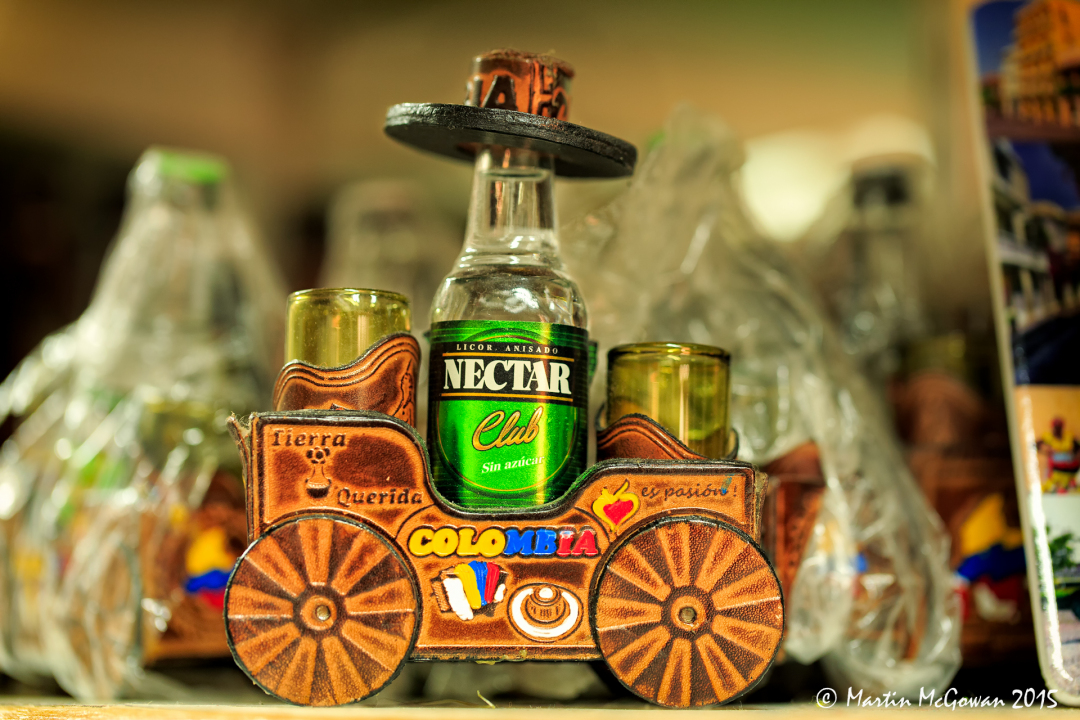
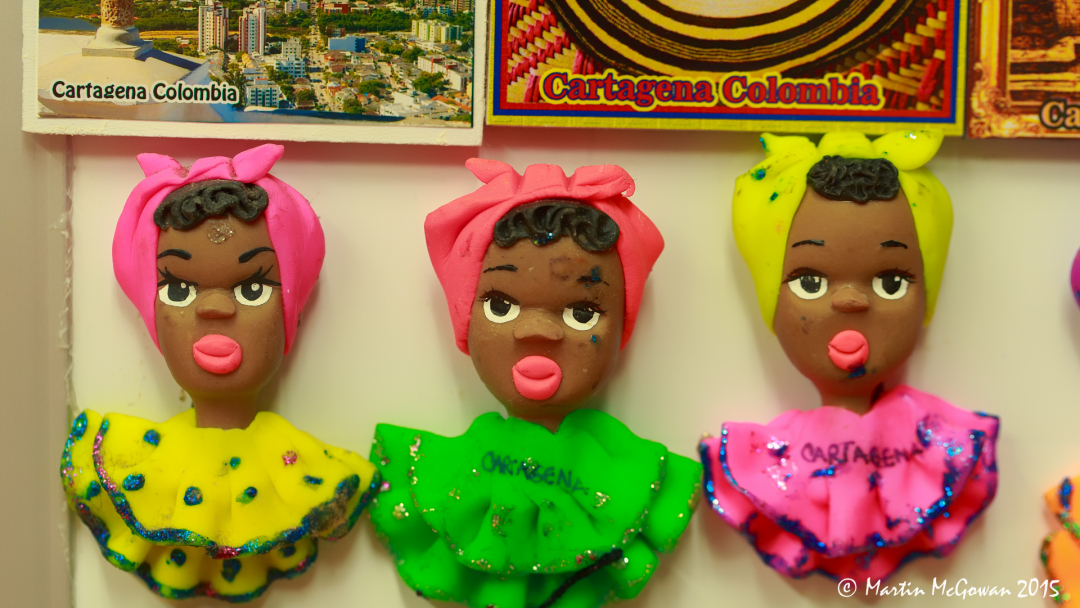

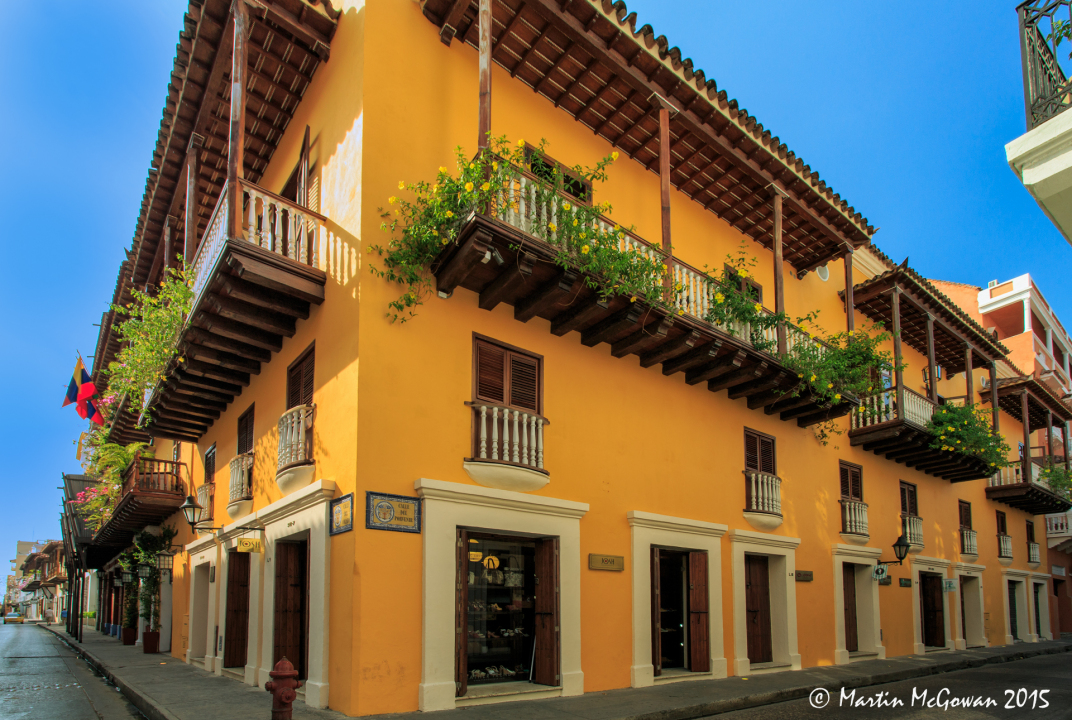
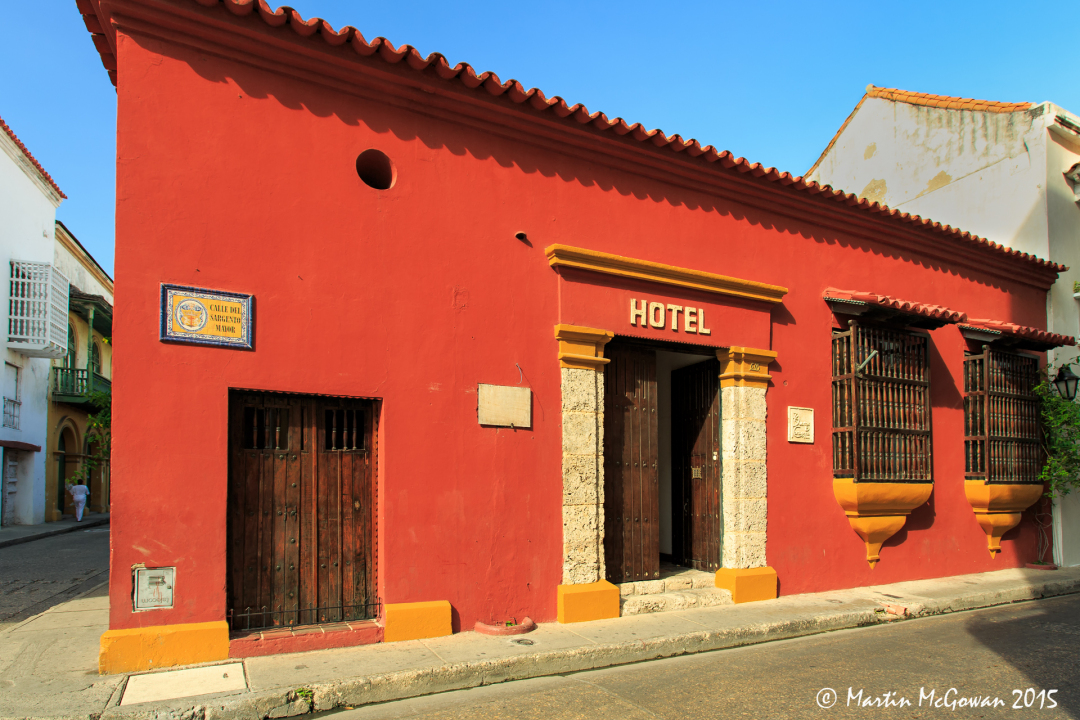
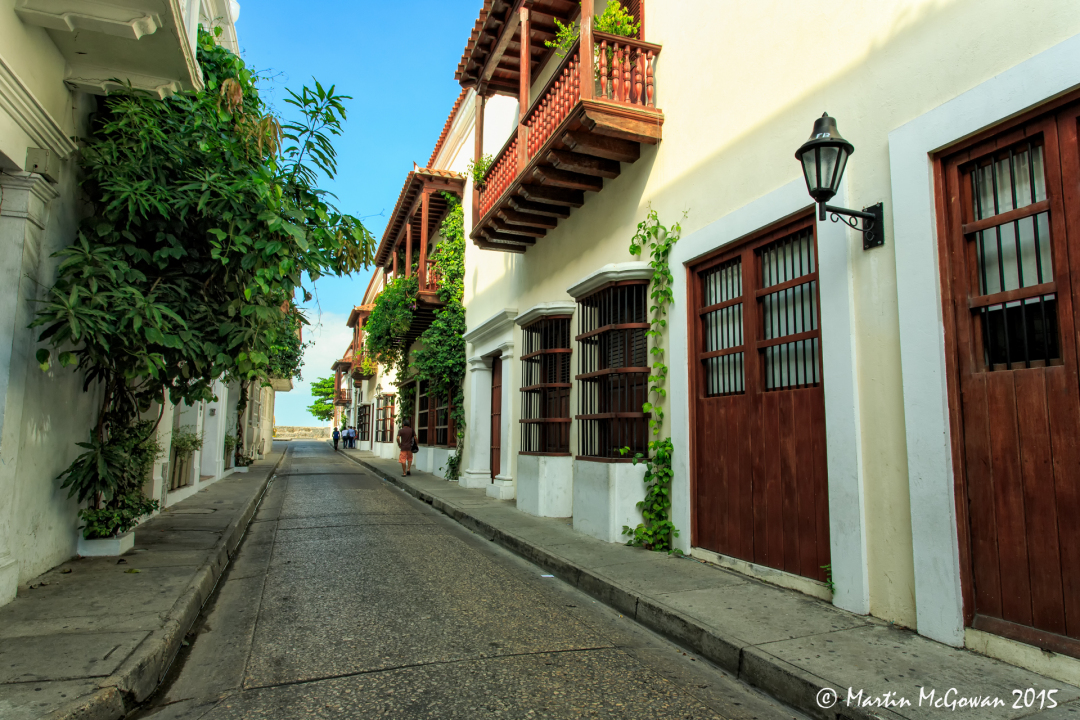

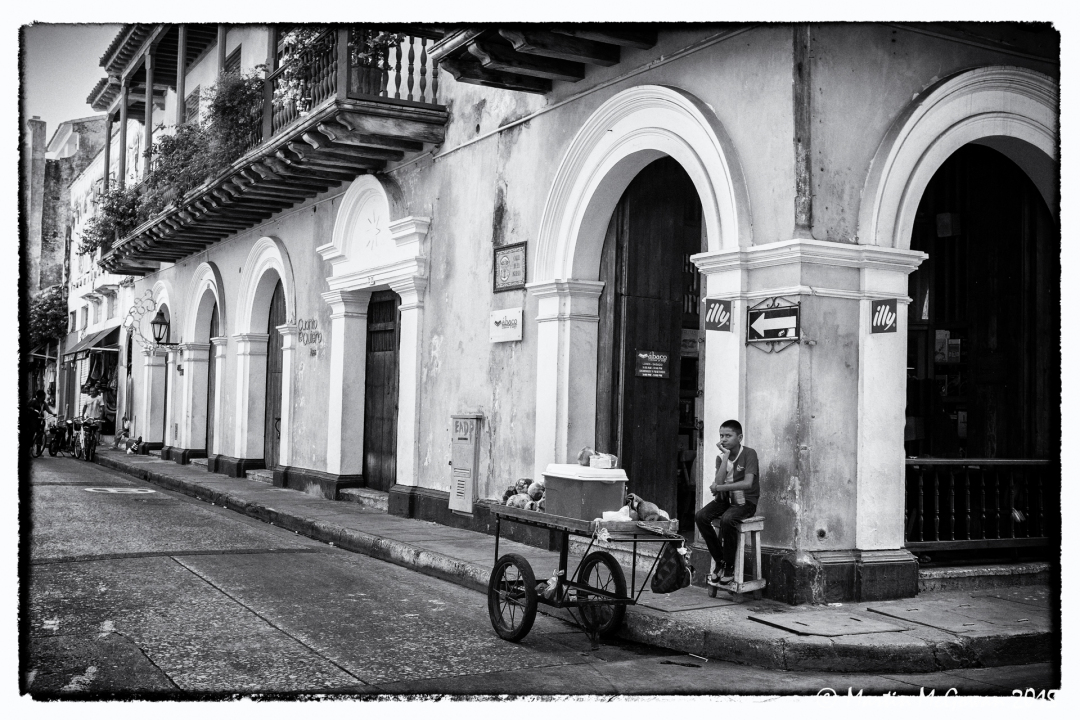
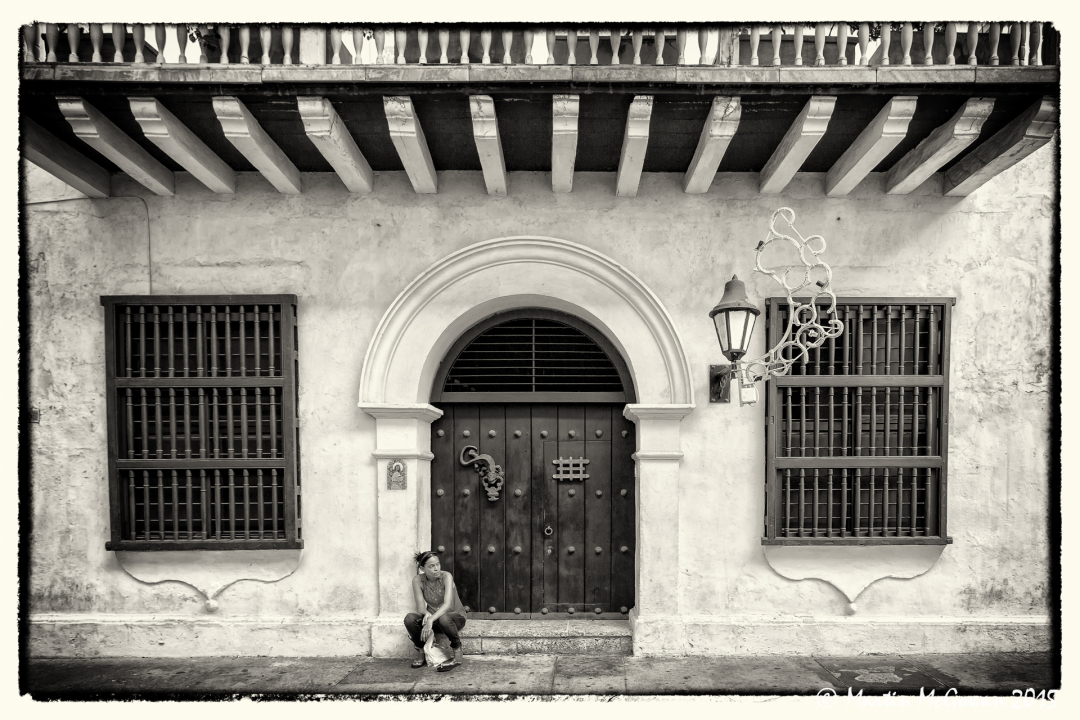
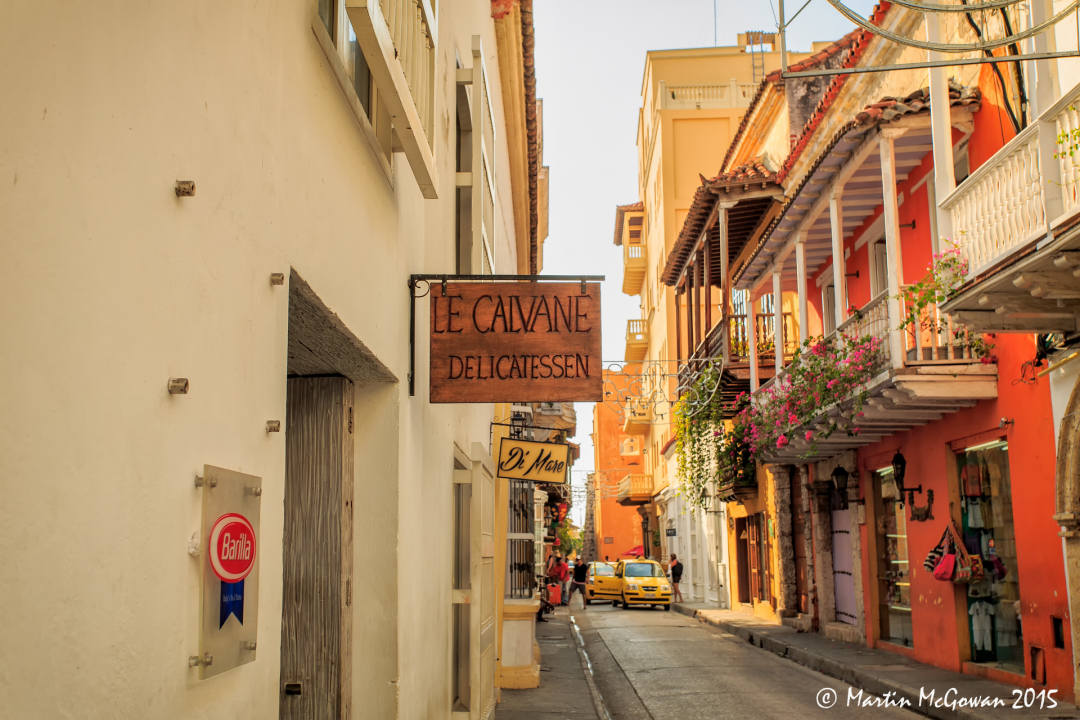
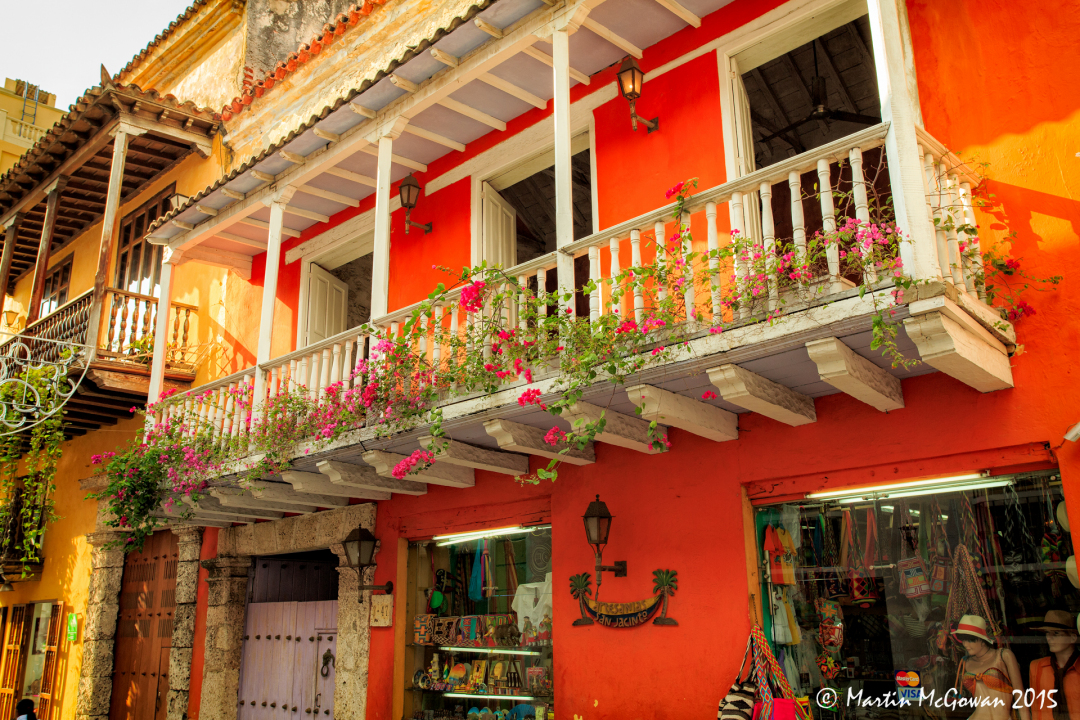
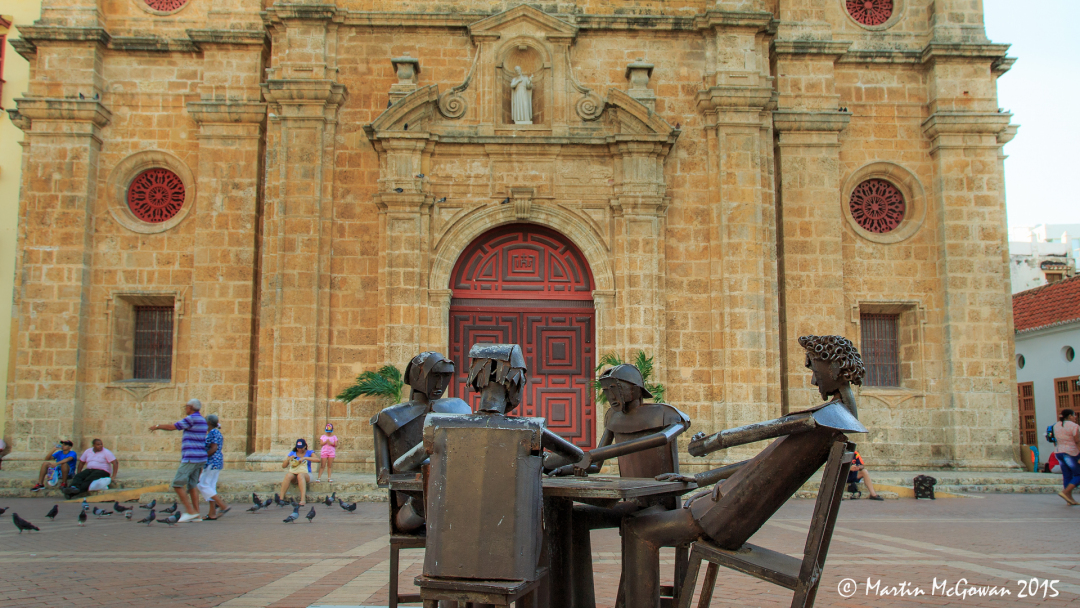
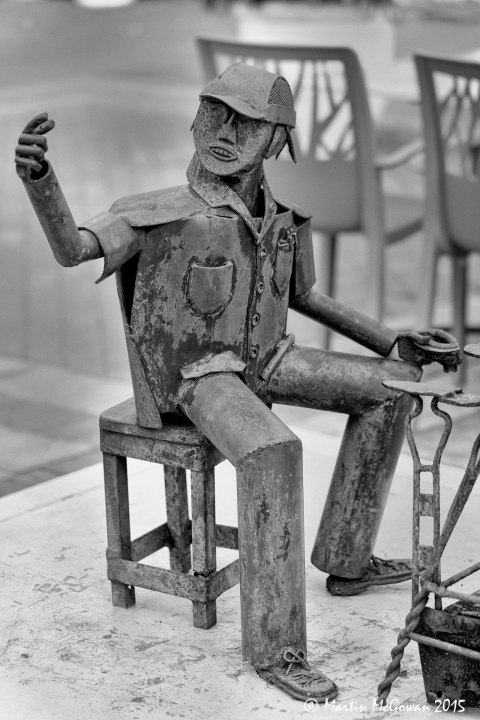

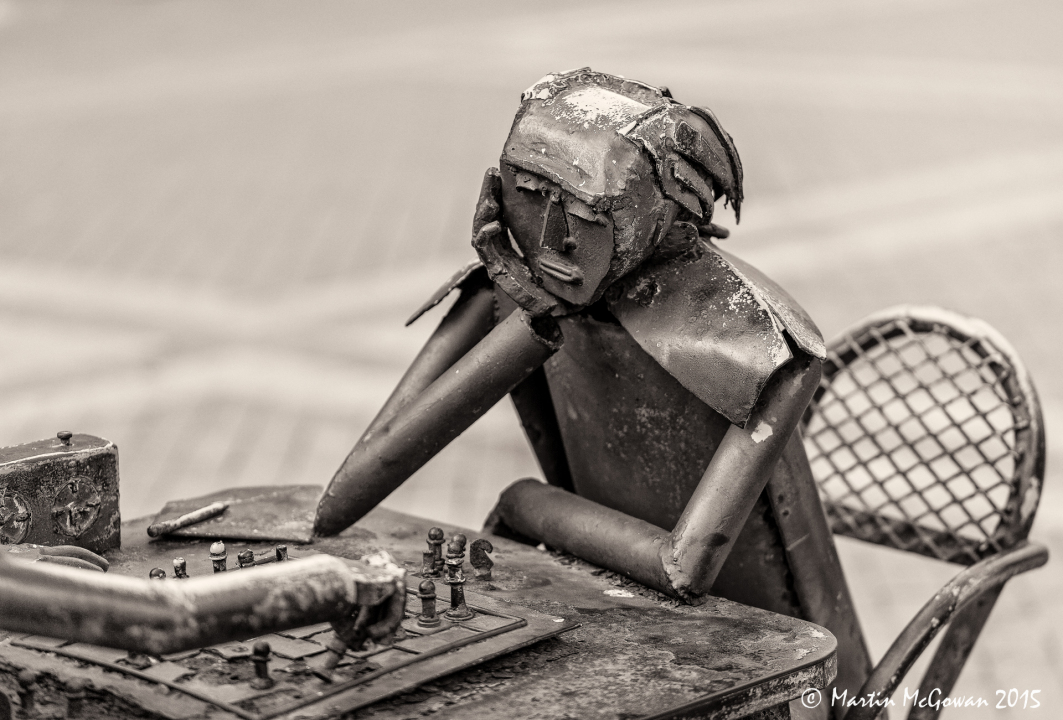
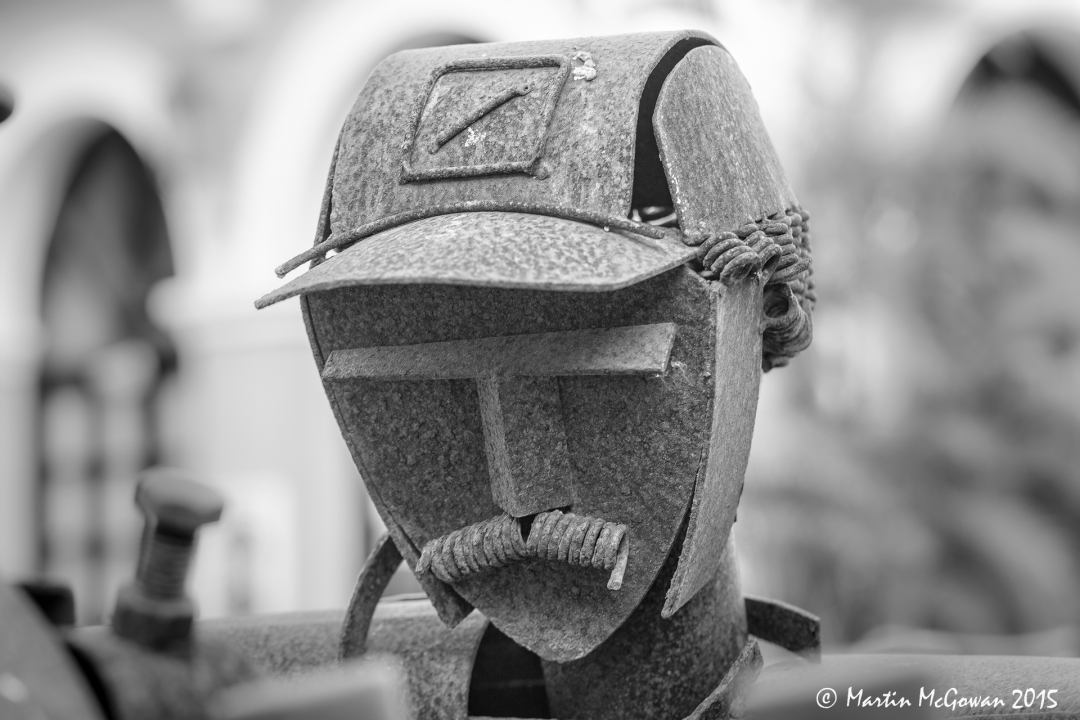
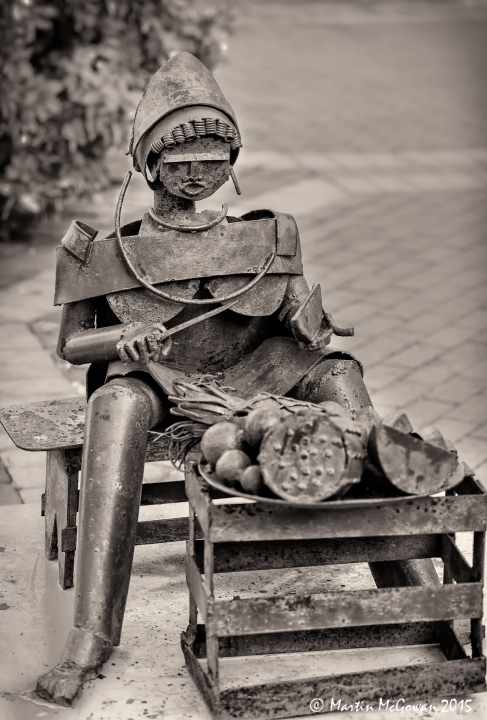
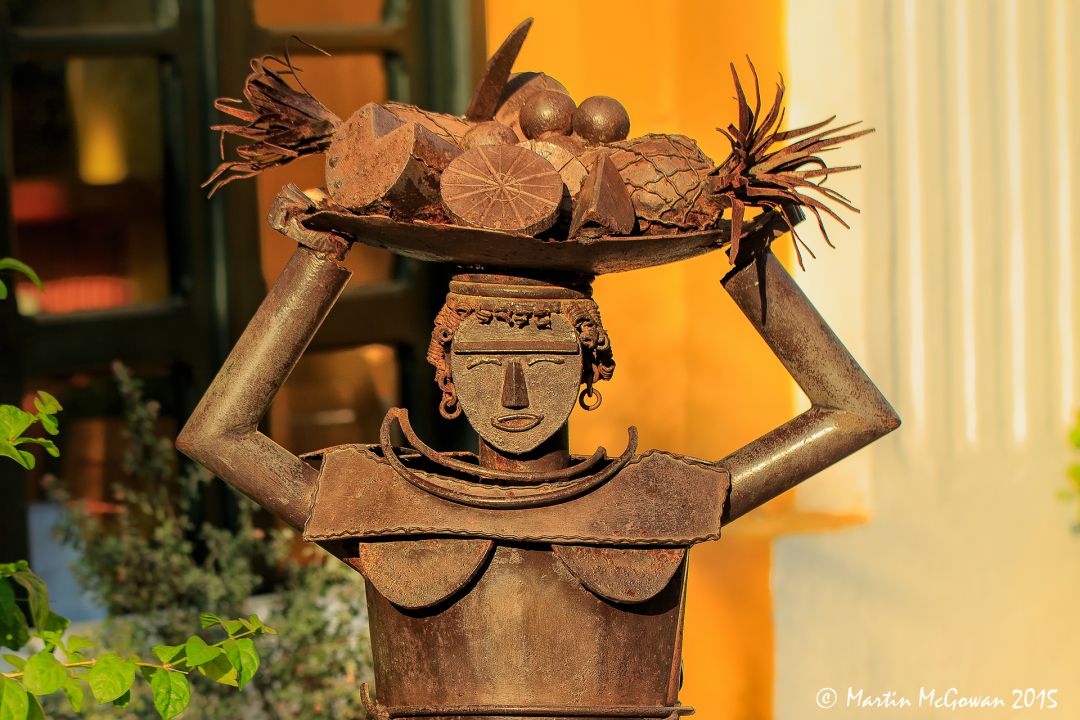
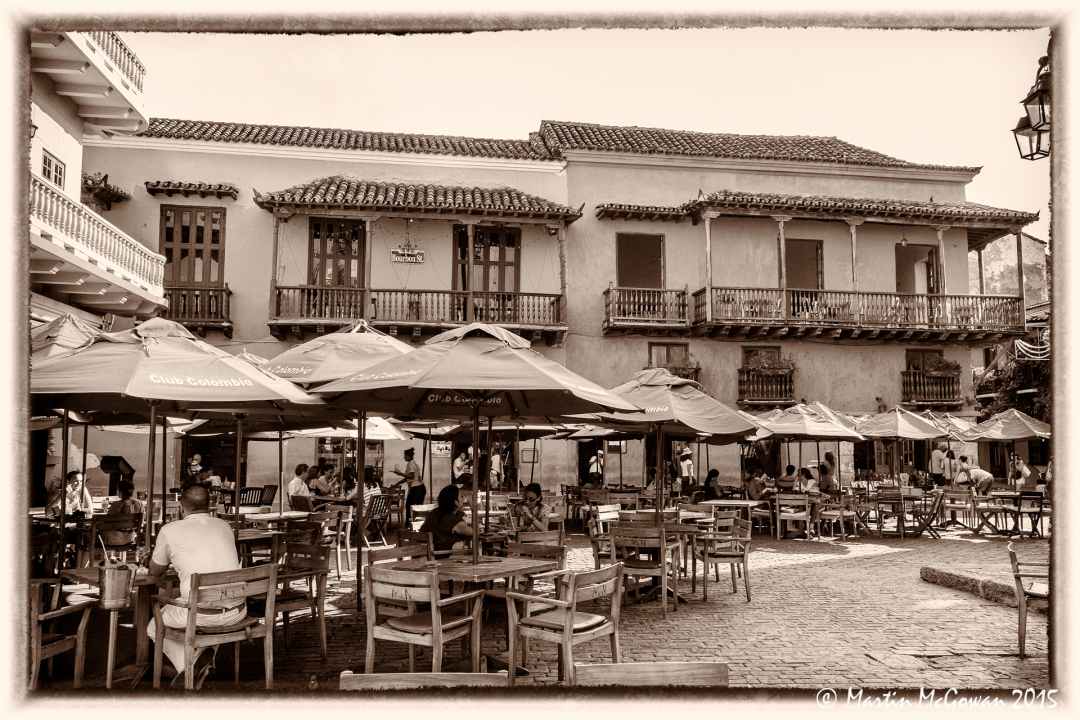
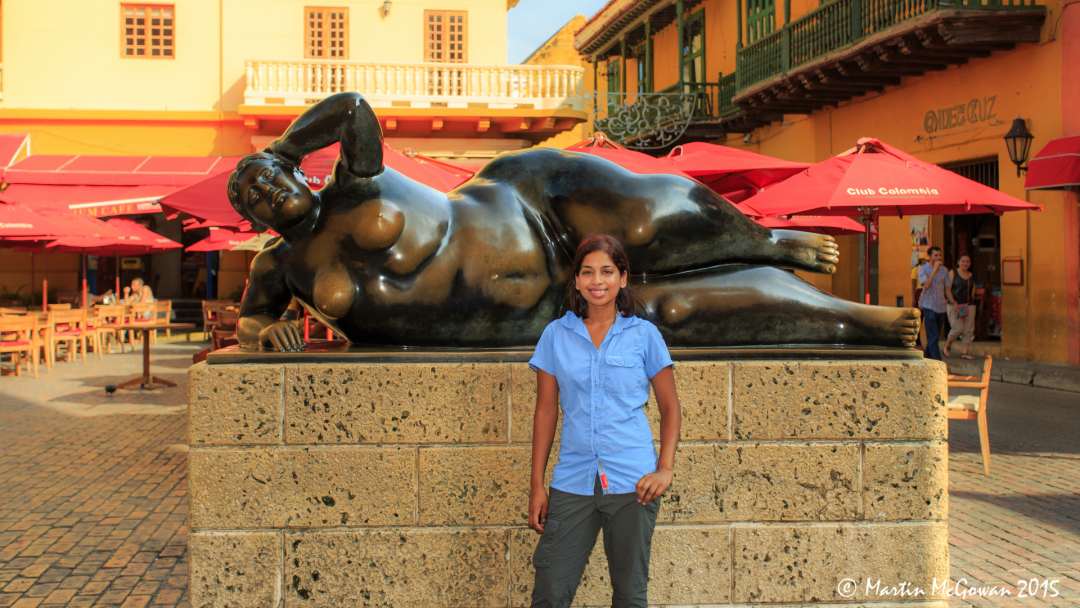
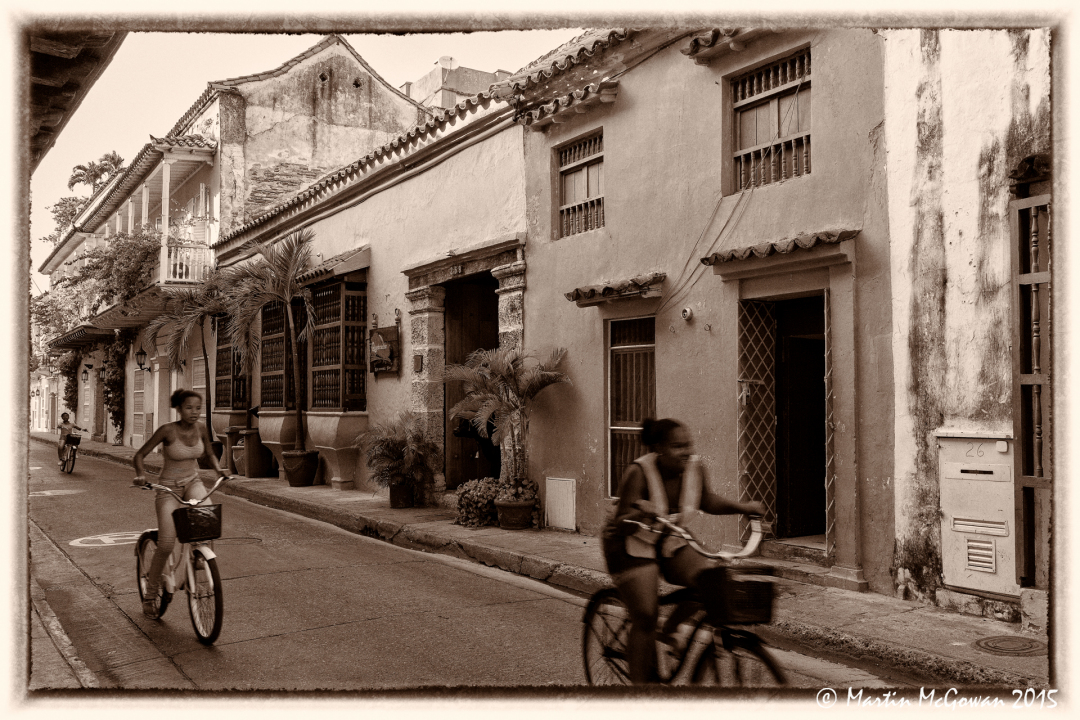
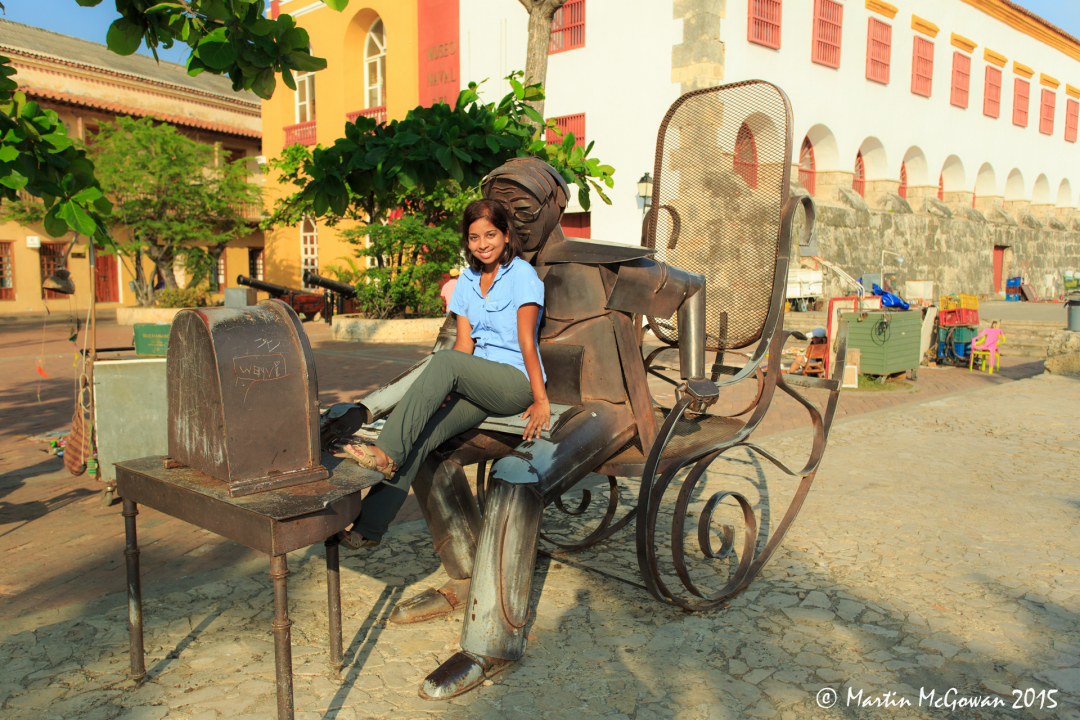
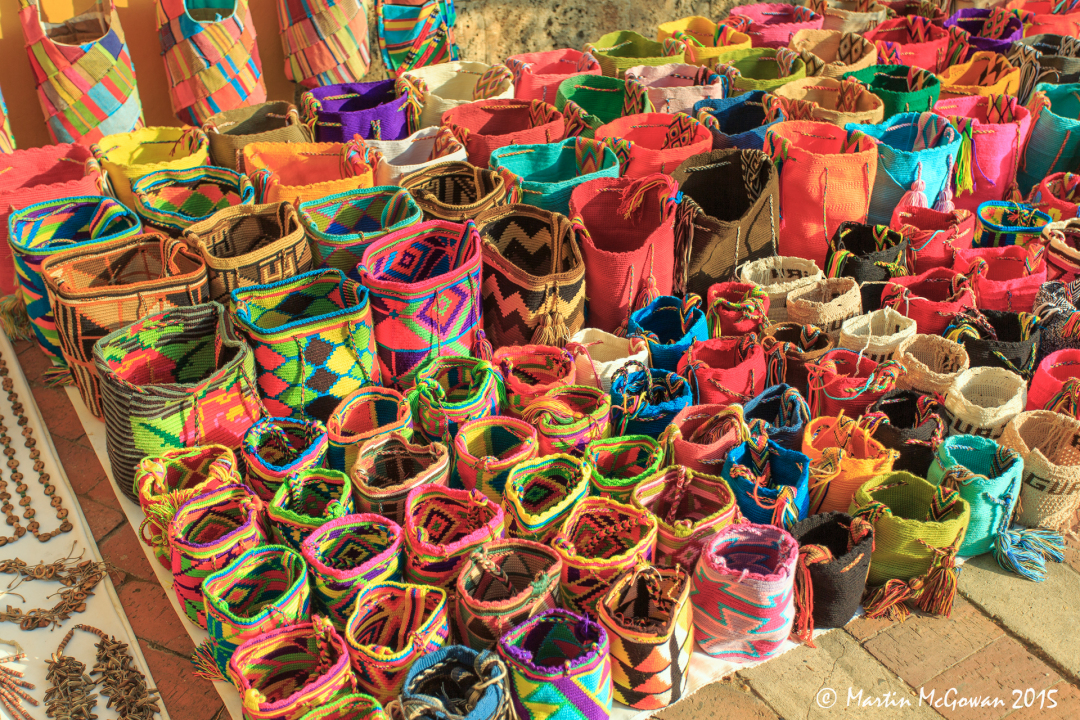
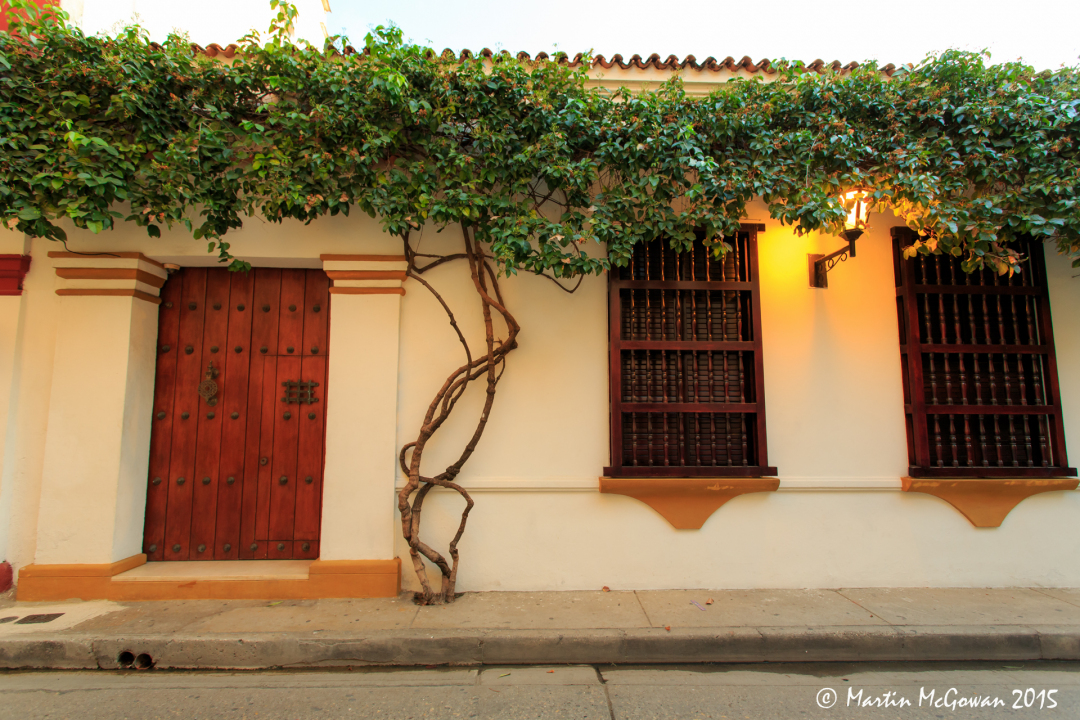
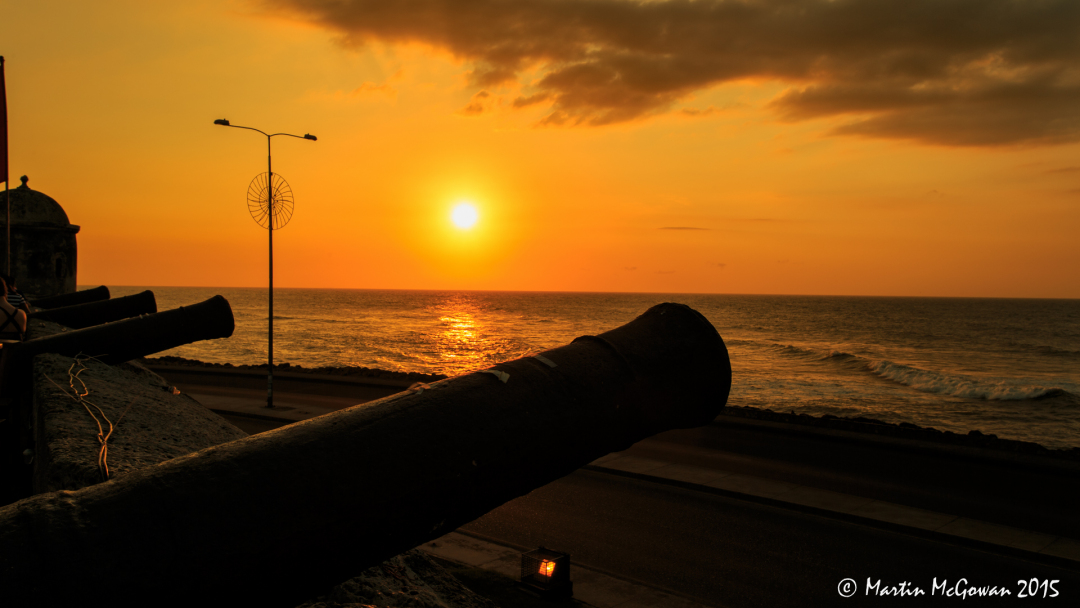
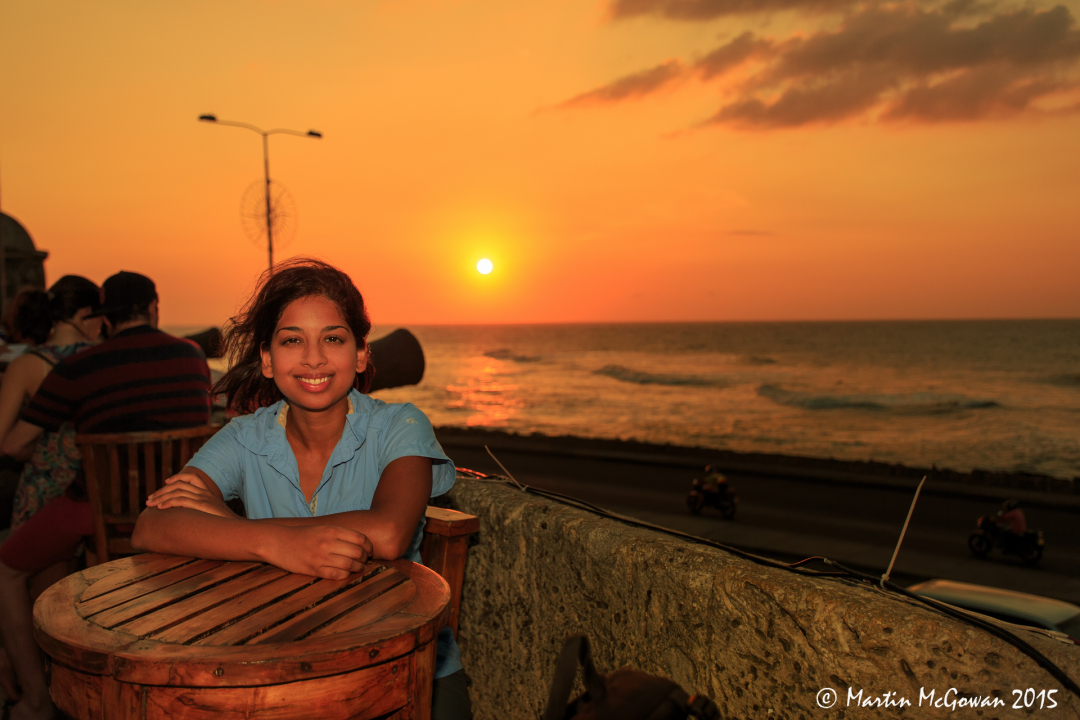
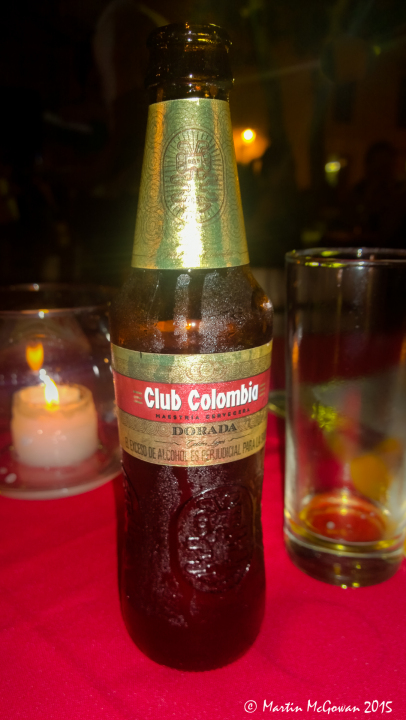



As we ended our Central American journey and I was trying to decide whether or not to continue on to South America, I stumbling onto your blog. Your pictures of Cartagena inspired me to see that city. We are taking the San Blas Ferry on Aug.4, 2015. Keep posting please.
Elise
Hi Elise,
Have you already booked your tickets on the San Blas? We have a deal with Fritz to offer discounts…
It would be great if you could join our group and post your experiences, lots of people are interested in seeing the service working…
https://www.facebook.com/groups/OverlandSphere/
Martin
Reading this through my lunch break. Sounds magnificent! I am lost in a moment fantasising I am there! X